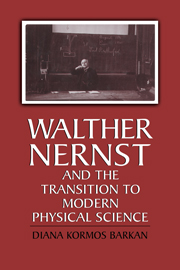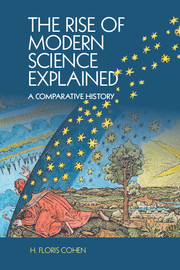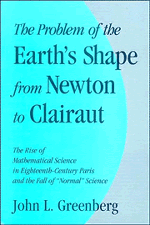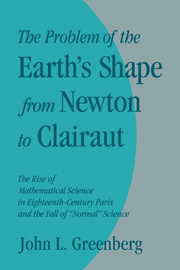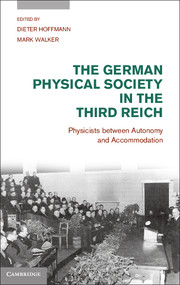Walther Nernst and the Transition to Modern Physical Science
One of Germany's most important, productive and often controversial scientists, Walther H. Nernst (1864-1941) was at once the first "modern" physical chemist, an able scientific organizer and a savvy entrepreneur. The winner of the 1920 Nobel Prize for Chemistry, Nernst was a key figure in the transition to modern physical science with his contributions to the study of solutions, of chemical equilibria, and of the behavior of matter at the extremes of the temperature range. This volume provides a scientific biography of the man who was a director of major research institutes, the rector of the Berlin University, and the inventor of a new electric lamp. It also addresses the work of many prominent scientists, such as Albert Einstein, Max Planck, Wilhelm Ostwald and Svante Arrhenius. A wealth of new archival material and recent scholarship reveals how Nernst's career exemplified the increasing connection between the German technical industry and academic science, between theory and experiment, between concepts and practice, providing a rich portrait of the history of science in the period preceding the Second World War. This book also details a set of specific scientific problems that evolved at the intersection of physics, chemistry and technology during one of the most revolutionary periods of modern physical science.
- Extends knowledge of history of science in the period preceding World War I
- Draws on a wealth of archival material and scholarship
- Readily accessible to a non-specialist audience
Reviews & endorsements
"Barkan's picture of Nernst and his science includes many new and interesting interpretations, solidly documented and based on meticulous archival studies." Physics Today
"...Barkan's book provides an exceptionally convincing account of an era that is probably of greatest interest to physical chemists. We recommend this book...." Nature
"...a readable, informative book offering a window into the technical, political, and social aspects of the scientific research of that fascinating era." American Journal of Physics
"...quite informative and thoughtfully constructed book that should be relevant to anyone interested in the history of modern phyical science, and particularly its relations to technological developments." Technology and Culture
Product details
March 2011Paperback
9780521176293
302 pages
229 × 152 × 17 mm
0.44kg
Available
Table of Contents
- Preface and acknowledgments
- 1. The invention of identity
- 2. Beginning
- 3. The early researchers
- 4. The Göttingen years
- 5. The Nernst-Planck exchange
- 6. Electricity and iron
- 7. High temperatures and the heat theorem
- 8. Theory and heat theory
- 9. Berlin and low temperatures
- 10. The incorporation of the quantum theory
- 11. The witches Sabbath: the Solvay Congress
- 12. The Nobel Prize
- Conclusion
- Bibliography
- Notes
- Index.

